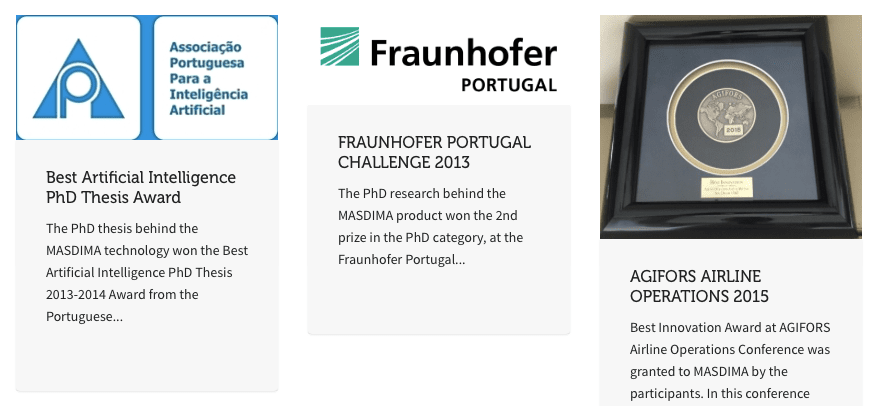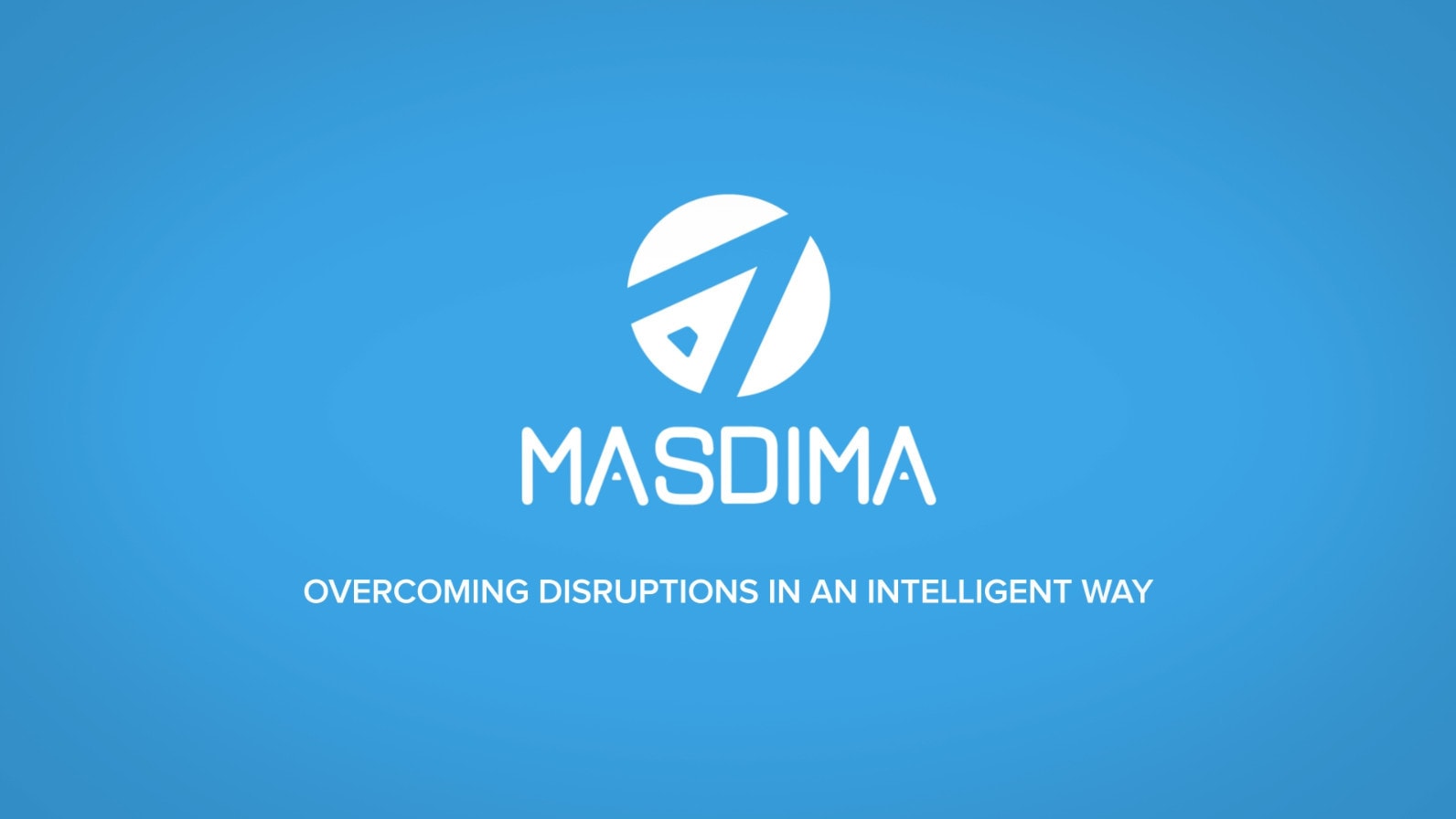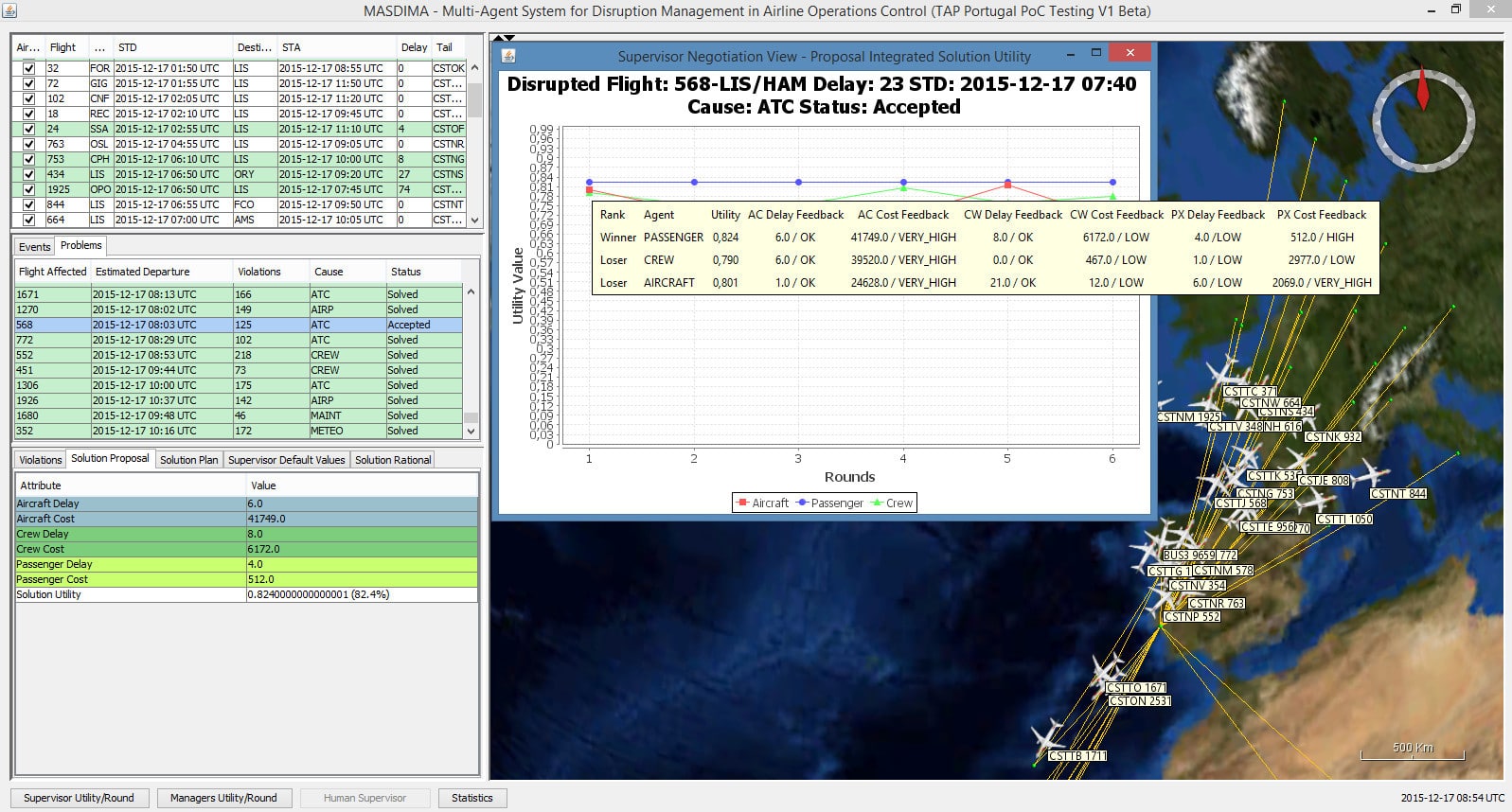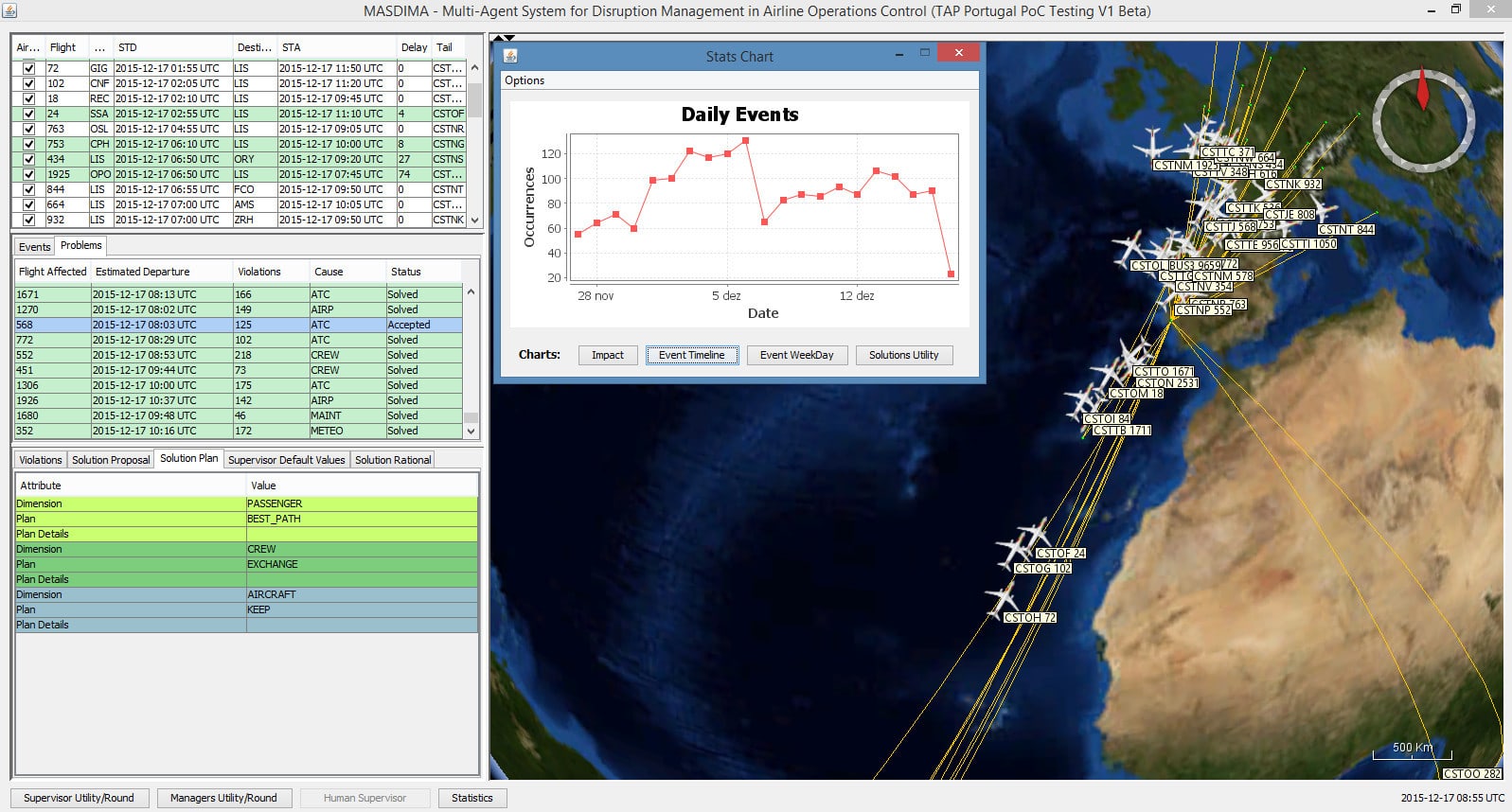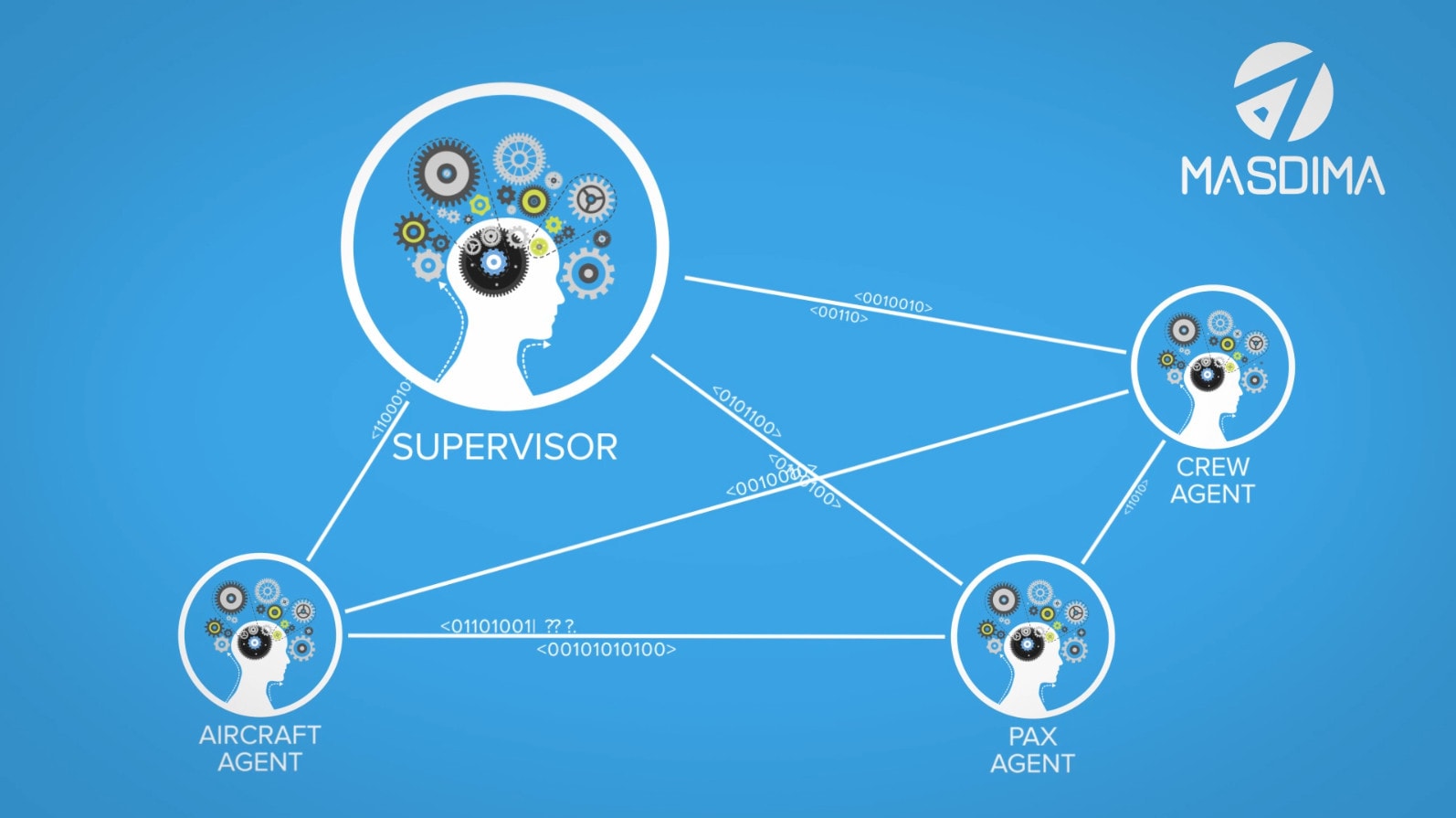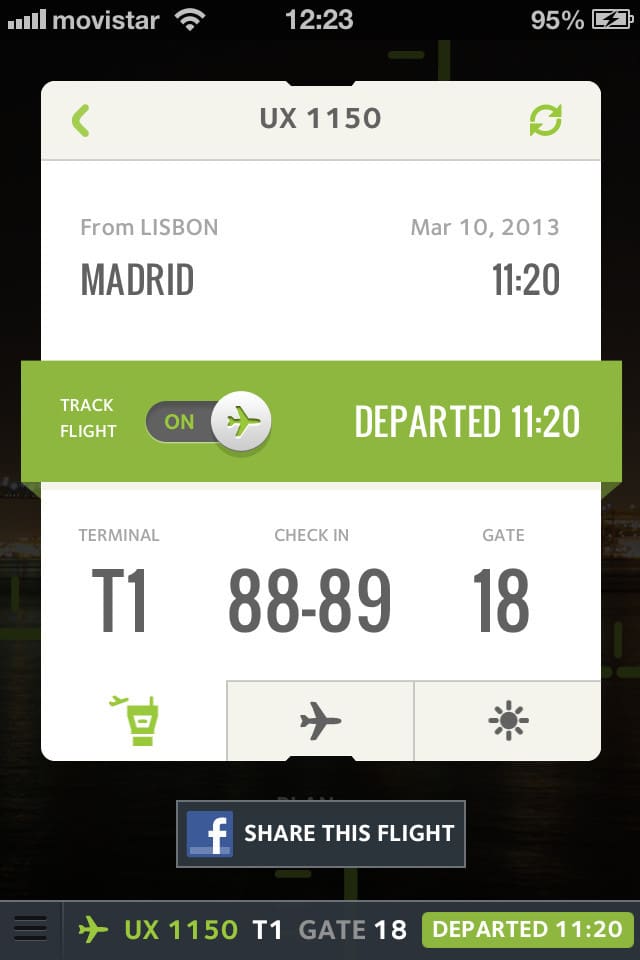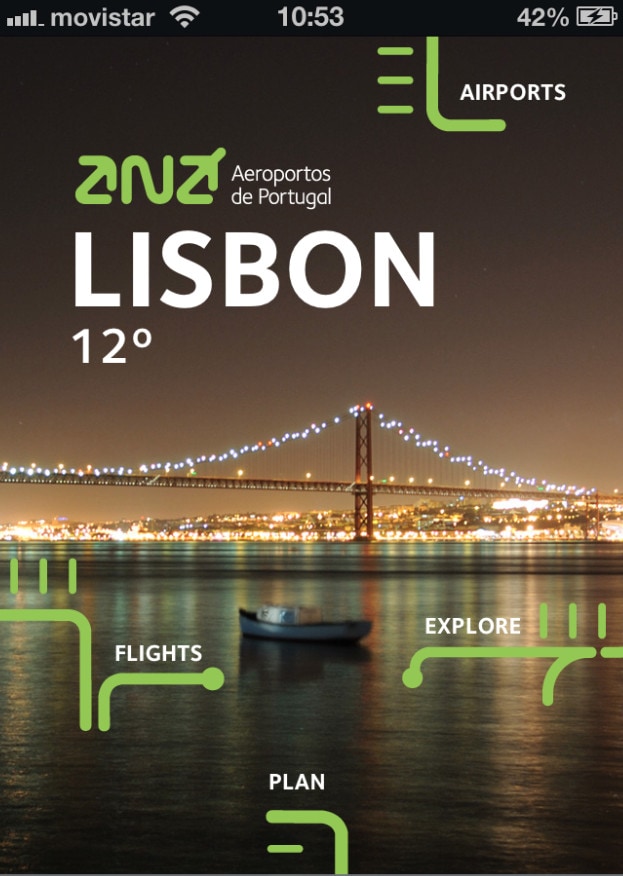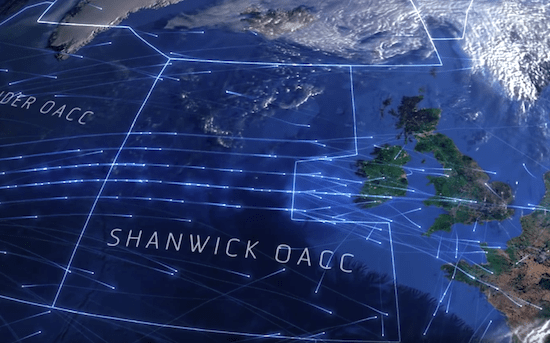It is pleasure for me introducing you a person and his project, with other two mates, about the disruption management in airlines (and probably applied to other means of transport), it is a pleasure because this project borns from the university (or college) from the research activity.
Antonio Castro was born in 1965 in Porto, Portugal and studied at Porto Polytechnic Engineering Institute where he got his degree in Information Systems Engineering in 1997. In 2007 he got his Master Degree in Artificial Intelligence and Intelligent Systems from the Faculty of Engineering, University of Porto and the Ph.D. in Computer Engineering from the same institution in 2013. Additionally, he has a postgraduate course in Air Transport Operations from ISEC in 2008
Antonio works for TAP Portugal since 1990 and currently he is a Board Advisor for IT/IS projects and responsible for projects related with airline operations control.
Antonio is also Co-founder and CEO of MASDIMA (www.masdima.com) a start-up company created together with two other colleagues, from the research made during his Ph.D. where a Multi-Agent System for Disruption Management applied to Airline Operations Control was proposed, that includes the passenger point of view in the Irregular Operations Management Process (IROPS)
[aeriaa] What is Masdima? Why and when did you decided to start the adventure from the academic environment to a business model?
[Antonio] Masdima means Multi-Agent System for Disruption Management and it is an approach based on distributed artificial intelligence techniques, to realtime management of disruptions that might affect an operational plan optimizing one or more goals (e.g., minimize costs, increase goodwill, etc.). It includes learning capabilities while solving the disruptions (making it wiser and faster with time) as well as simulation ones that allows to improve future plans (making them more robust to disruptions). It is a technology that can be used on all transport domains (air, ground and maritime) as well as in others with the following characteristics: a previous generated operational plan, known but unexpected events that might disrupt the operational plan and possible actions to recover from disruptions.
MASDIMA, Lda is also the name of the company created afterwards.
There were two events that make me think that it would be possible to start this business challenge. First, the Fraunhofer Challenge Award 2013, that awards research with practical utility. My research won the 2nd place. Second, Paulo Maia (one of MASDIMA co-founders) selected my PhD research as his study for the MBA concluding that it has potential to succeed in the market.
[aeriaa] How is the current status in the PhD investigation related to commercial aviation industry, as Airlines or airports? What will be the most interesting areas to investigate in this field?
[Antonio] The air transport is a domain with a lot of very interesting problems and, as such, with several good areas to investigate. For example, the use of ABMS to better understand the role of coordination in this socio-technical system, improving current policies and discovering emergent behaviour or research related with models and automated mechanisms that will help to increase collaboration between airlines when facing disruptions.
From my point of view and considering the three major group of players in air transport, i.e. ATC (ATFM), Airports, Airlines and Passengers, any research related with disruption management that includes totally or partially these groups, is worthy to pursue. The impact of disruption in air transport is huge, leading to high costs for everybody and poor passenger satisfaction. The goal of commercial aviation is to transport passengers from point A to B and, not, aircrafts and crewmembers. As such, it should be manage having this important goal in mind, including when dealing with disruptions.
[AMAZONPRODUCTS asin=”3662433729″]
[aeriaa] What are the main Masdima features?
[Antonio] Currently, our approach is being applied on Airline Operations Control. It is prepared to work in real-time, 24×7. It includes the following main features:
- Operational plan monitoring & flight tracking: In a 3D visual display the operational plan is monitored in real-time allowing to track flights.
- Event detection: Events like aircraft malfunction, weather and ATC restrictions, crew problems, passenger and baggage delay, among others are detected in real-time.
- Disruption impact assessment: The impact of a disruptive event is assessed in the operational plan of the aircraft, considering all affected crew members and passengers (including missed connections).
- Integrated problem resolution: The best integrated solution is found including a solution for the aircraft part, a solution for each of the crew members, and for each passenger, including crew and passenger re-accommodation.
- Human-in-the-loop: Human factors are important. All candidate solutions are presented to the human for feedback and/or approval.
- Passenger interaction: A customer-centric view in IROPS is important. Passengers have the possibility to interact with the system (through mobile devices) so that the solution is aligned with the passenger preferences, avoiding unnecessary calls and/or travel to the customer services counter.
- Solution application: After human approval and if desired, the operational plan is updated accordingly and automatically, including passenger rebooking.
- Simulation: MASDIMA is able to run with past or future data, allowing to perform what-if scenarios either with historical events and/or simulated events accordingly to a specific model. It also allows the user to input manually any kind of event and, as such, perform what-if-scenarios based of specific situations that are likely to occur.
- Improve future plans: MASDIMA can execute a not yet released operational plan, simulating future events and allowing to improve the plan using the simulation results.
It is important to point out that MASDIMA does not require the airline to change the existing systems. MASDIMA integrates information from those systems (even legacy) and allows to apply the solutions found on those systems as well. Finally, due to these features, MASDIMA can also be used as a training tool to train the OCC staff.
[aeriaa ]MASDIMA is focused on the Aircraft-Crew-Passenger dimensions, representing the following information:
- Operational information: Flight, crew and aircraft, including MRO and his changes.
- Passenger information: Passenger flight list, reservations and alternative flights for automatic passenger re-accommodation in case of missed connections.
- Operational events: Events that might affect operation, related with aircraft, crew, passengers, airports, aircraft maintenance, etc.
- Cost information: Costs related with aircraft, crew members and passengers.
How is the complexity of the information sources for populating the system? ACARS, weather, airports events, etc.
[Antonio] MASDIMA requires access to all that information that, depending on the airline, can be spread across several and different sources, including legacy systems. On the technology side, the multi-agent system paradigm together with current middleware technologies, turns this task easier. On the data availability and accuracy side, the access to the information will depend on how much the airline is “computerized”. For example, in TAP Portugal, it was very easy to have access to all types of information, with the exception of costs. The costs are usually used for taking business and strategic decisions at the management level and, as such, is kept in BI systems or even in spreadsheets. Although MASDIMA can work with this granularity level of cost information, it works better if we have cost information at the operational level updated frequently. Finally, another challenge is to deal with unstructured information, like, for example, weather information. For MASDIMA to be populated by this information, it was necessary to have someone to structure the information before being detected by the system.
[aeriaa] The OPS roles analogy implemented through the software agents is interesting, in this case, in the academic Multi-agent System definition, you included the human intervention for modulating the best solution criteria or selecting the preferred weight in the Aircraft/Crew/Passenger variables. How far can we rely on a pure “self-organized system” without the human intervention? How much weight of “human touch intervention” is enough?
[Antonio] The main challenges for this kind of system is the availability and accuracy of the information, fundamental for the system to take decisions. Uncertainty, although possible to be managed by these systems, is still something where the humans are still better.
These two facts make the human intervention still a necessity although the human role will likely change with time and utilization of such systems. In the beginning the human will have a more active role, validating the information and deciding differently when the system does not respond as required. With time, that role will converge to a more passive role, i.e., it will participate only when needed. These systems have learning capabilities and will improve with time making them more reliable and trustworthy for the humans.
There are studies, some of them performed by important and reputed institutions like NASA, that show that allowing to much human intervention in such systems, will provide poor results when compared with less or none intervention. These studies also show that human intervention is important and relevant (given better results) when we have ambiguity and/or uncertain information. My PhD research confirms these findings.
So, unless we remove completely the ambiguity and uncertainty of the information, we will still need to have some level of human intervention. Nevertheless, that level of intervention tends to be minimum with time. Nowadays, the learning capabilities of these systems are amazing and, for example, on the airline operations control domain, I think it is possible to automate 95% of the process, including the decision autonomy necessary of the several steps of the process, which is a huge improvement when compared with current way of managing the operation (even with the help of current decision support tools).
[AMAZONPRODUCTS asin=”3639191145″]
[aeriaa] Regarding the operational info and events, nowadays the A-CDM deployments are changing the way the ATM/Airports/Ground Handlers and Airlines are cooperating, the model is based in procedures and information sharing under a collaborative working culture aiming to have the most accurate and predictable TOBT/TSAT times so as to have the most efficient departure sequence as possible. As the experience you already have, do the Multi-Agent Systems a good tool for helping the decision support? How can these expert systems deal with outcome decisions that did not please to the interest of two Airlines that wanted their flights in better pre-sequence departure position?
[Antonio] This is the kind of environment where the multi-agent system is a better paradigm to use. Allows representing the different entities, including their goals and preferences that, as you say, might be different. Multi-agent system allows modelling better these different entities and interests. Using negotiation, it is possible for the software agents to arrive an agreement that is the best one for all parties. It is even possible to have an automated negotiation that include software and human agents. These systems are also able to learn from the interaction with humans.
By including the human participation at the right level, a system designed with this paradigm and using the techniques I mention, will allow to solve better problems similar to the one you address on the question.
[aeriaa] You proved the solution with TAP Airlines, how was the experience? What concrete results can you share with us? Any curious result or surprise during the Proof of Concept?
[Antonio] In January 2016 we will have a first beta version of MASDIMA on TAP Operational Control Center, running in real-time with real data 24×7. The first phase will be to validate the automatic event detection and impact assessment analysis performed by the system, allowing at the same time, the OCC operators to perform some kind of what-if scenarios. On the second phase, we will validate the solutions found for the problems that where raised during the impact assessment. On the third phase we will validate and improve if necessary, the human feedback mechanisms, so that the system can incorporate this important knowledge and, finally, the application of the solution accepted by the human operators on the operational plan. This includes the automatic rebooking of passengers that miss connections.
The first impression we got from the users, was excellent, as well as the preliminary results regarding cost reduction. At the end of the first quarter 2016 we will have more information to give about the results, including the users feedback.
[aeriaa] What kind of airline are your looking for new PoC?
[Antonio] TAP has around 60 aircrafts having a hub and spoke network and operating a multi-fleet aircraft. A larger airline, probably around 100-150 aircrafts and with a different network would be interesting has a next step. We believe that MASDIMA scales very well for all kind of airlines and, as such, we are ready to accept any other kind of airline.
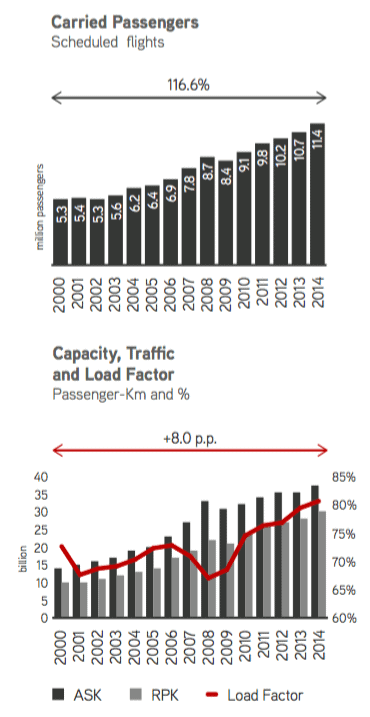
TAP Carried Passengers evolution 2000-2014 period. Source: TAP Annual Report 2014. www.tapportugal.com
[Aeriaa] Adopting a passenger-centric approach to solve your disruption management issues is a must for airport and airlines, one of the advantages of this model is the capacity of communicate with the passengers with certainty in the outcomes of a decision made, what concrete actions do the airlines/airports could adopt with the help of MASDIMA?
[Antonio] Besides notifying passengers about the delays and alternative itineraries when a passenger misses a connection, MASDIMA allows the passenger to interact with the system and to influence the final decision. For example, a passenger receiving a list of possible alternative itineraries can simple select one of them or can appeal for a different solution, arguing according to its interests. This kind of things has a deep impact on passenger satisfaction. For the airlines means less people calling and/or appearing at the customer services counter. Airports can also benefit from this level of interaction with the passenger either by sharing information with the airline and of communicating with the passenger through this indirect channel or by using MASDIMA services. Since the passenger will use an app to interact with the airline or airlines, we are thinking to extent the services provided by this app to the airports and other air transport stakeholders. Besides operational services, it can provided commercial or other services that are of interests to the stakeholders and passengers.
[aeriaa] One of the current challenges is knowing where are the passengers and what are they doing prior to flight boarding, what do you think about collecting the heterogeneous information related to the pax behaviour and trying to put in Multi-Agents system solutions? What are the key factors of a perfect information model for feeding the Multi-Agent Solutions?
[Antonio] Having an application that allows the passenger to interact with MASDIMA will also allow collecting that kind of information (if the passenger agrees in sharing it). Working with airports, we can even improve the quality and extent of the collected information. To know where the passengers are prior to boarding is important for airports and airlines, because of operational reasons. It allows taking pro-active and reactive measures regarding possible disruptions, caused by arriving late to the gate. This information has also commercial value too, especially for the airports and other stakeholders. A multi-agent solution for air transport benefits from all the information we can get about flights (ATC), aircrafts, crewmembers, passengers, ground services (catering, fuel, etc.) basically all stakeholders of this air transport system, including times and position. In an ideal world, we would have access to all this information in real-time. The keys factors about the information we need, besides being available, is accuracy and reliability. We might not have access to all the information we would like to have but the one we have should be accurate and reliable, and this is a challenge.
[aeriaa] You were recently at Aviation IT Show conference. How was your experience? How the airlines received your Value Proposition? What will be your next industry conference or meeting?
[Antonio] It was a very good experience. We received good feedback not only from airlines but also from IT companies that see our product as a complement to their existing air transport applications portfolio. A partnership with a major worldwide IT company that already has airlines as customers is almost sealed. We hope to announce it very soon. The next industry conference will be AGIFORS Airline Operations in May 2016, at Seattle, USA.
[aeriaa] What are the trends in the OPS airlines departments for disruption management? What are they demanding?
[Antonio] Airlines are demanding tools that help them to have a passenger-centric approach when managing the daily operations, especially, when dealing with irregular operations (IROPS). They want to be able to minimize the costs (with aircraft, crew and passengers) and, at the same time, increase the passenger satisfaction and they want to do that, preferably, without having to change their existing systems. This message was very clear on the last AGIFORS Airline Operations 2015 held in Abu Dhabi. MASDIMA complies with this requirement. Additionally, airlines also want a high degree of automation and sophistication when dealing with passenger re-accommodation. Passenger re-accommodation is still a (very) manual process and, when faced with large disruptions, puts a lot of effort on call centers and other customers services, leading to loss of passenger goodwill. This requirement will drive a change on PSS tools, to allow them to be used by autonomous solutions like MASDIMA.
[aeriaa] In which new features are you working on MASDIMA? What are your objectives?
[Antonio] Recently we submitted a patent related with the new features we have in our roadmap. Let me point out some of them. The first is related with passenger interaction with the airline, during disruptive events. We want to allow the passenger to have an active role during the problem resolution phase. Nowadays, they have a passive role. If they are lucky, they will be informed apriori about the decision made by the airline. We want to change that by allowing the passenger to manifest his/her preferences, to choose from a list of possible solutions and/or argue about a different solution. The second is related with the use of alternative means of transportation (trains, metro, bus, taxi) as a way of solving disruptions for the passenger part. From finding the best itinerary to booking. We do this for flights by interacting with PSS systems and we want to do a similar thing for these means of transportation. The third is related with the simulation capabilities of MASDIMA. MASDIMA includes a probabilistic model to generate events based of historical information from the airline and airports, related with delays. Additionally, MASDIMA has a simulation clock, meaning that it can start to monitor operations in the past or in the future and we can even accelerate that clock. For example, with a normal computer we can run one month of operations, simulating events at the same time and solving disruptions, in two hours. These characteristics allows using MASDIMA to increase robustness in operational plans, even before publishing them. For example, let us suppose that today, an airline is working in the operational plan for two or three months from now. Before publishing the plan, they use MASDIMA to simulate disrupted events and see the impact on the operational plan they are about to publish, including delays, costs and missing connections. Using this information, they can change the operational plan so that the events that cause the most expensive disruptions can be avoid or minimized. It is a very powerful tool with a huge impact on the costs and passenger satisfaction.
Finally, in the long run, we want to use the MASDIMA approach on other domains like logistics and other means of transportation, like railways.
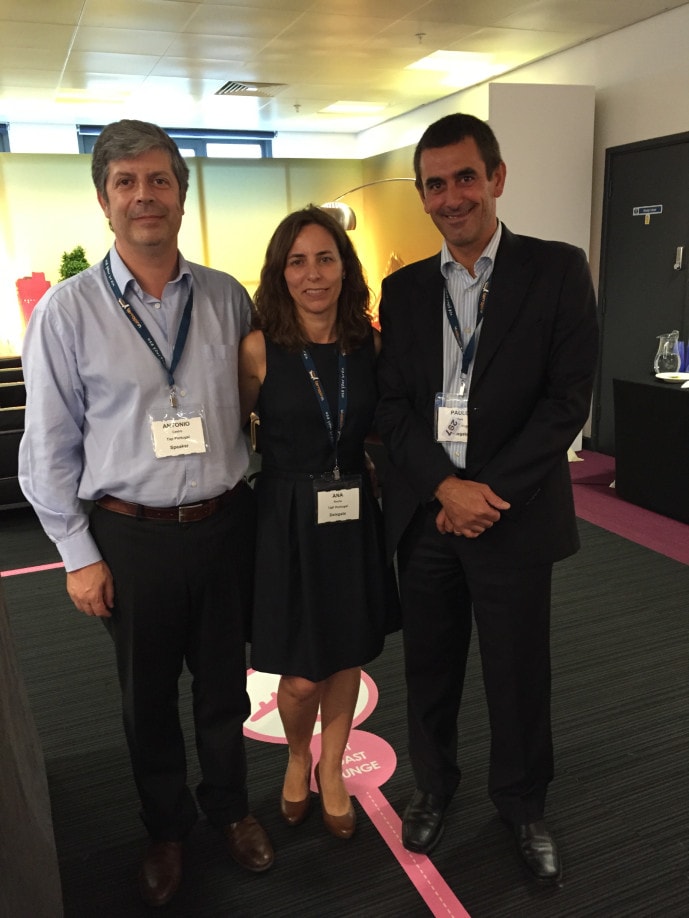
MASDIMA Team. From left to right. Antonio Castro (CEO), Ana Paula Rocha (CTO), Paulo Maia (CCO). Credit: Antonio Castro
[aeriaa] Until this question, it was a challenge for me not mentioning Big Data words during the interview, what do you think about the Big Data term and Data Scientists that surges below the stones every day. There are a lot of really good hybrid solutions with “traditional” models and Big Data tools as Hadoop, Spark, etc. or other semantic definitions as complex event processing that confused the ecosystem, what do you think about these concepts?
[Antonio] Big Data is a word to describe a natural evolution of the data-mining concept. Like data mining, the idea is to extract information from data. Nowadays we have larger and more complex datasets, hence the Big Data word. Larger and more complex datasets raise challenges that did not exist before, and that is the reason why data tools like the one you mention, appear. For me, what is more important, is the mechanisms (models, algorithms) that are related with decision making and learning capabilities. The data has a very important role but without a good “reasoning engine”, it is useless.
[aeriaa] Thanks Antonio. Obrigado.
MORE INFO
www.masdima.com
FOLLOW US
- Twitter. @aeriaablog
- Facebook. aeriaA in Facebook
- LinkedIn. aeriaA page in LinkedIn
- Airport Tech Group in LinkedIn
- Personal page in LinkedIn
- Youtube Channel



